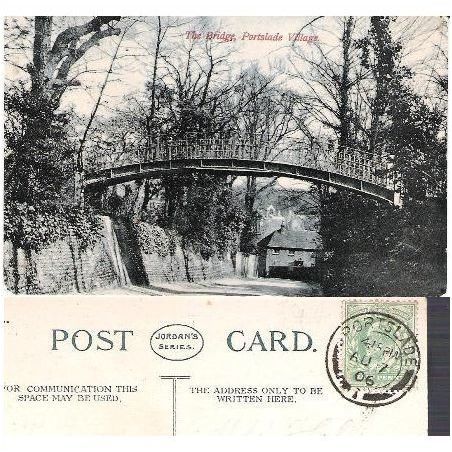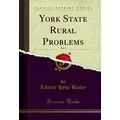Portslade, Brighton, E Sussex - the Bridge - Jordans postcard, local pmk
- Condition : Used
- Dispatch : 2 Days
- Brand : None
- ID# : 93647372
- Quantity : 1 item
- Views : 688
- Location : United Kingdom

- Seller : justthebook (+1703)
- Barcode : None
- Start : Sat 23 Feb 2013 15:37:35 (EDT)
- Close : Run Until Sold
- Remain : Run Until Sold
Checks/Cheques
 for 1 item(s) edit
for 1 item(s) edit
Shipping Calculator
More Listings from This Seller view all
Seller's Description
- Postcard
- Picture / Image: The Bridge, Portslade Village
- Publisher: Jordans
- Postally used: yes
- Stamp: Edward VII half d. lightish green
- Postmark(s): Portslade Aug 7 1906 cds
- Sent to: Mrs. Hall, 75 Hyde Road, Hendon, London N.
- Notes / condition:
Check out my !
Please ask if you need any other information and I will do the best I can to answer.
------------------------------------------------
Postage & Packing:
UK (incl. IOM, CI & BFPO): 99p
Europe: £1.60
Rest of world (inc. USA etc): £2.75
No additional charges for more than one postcard. You can buy as many postcards from me as you like and you will just pay the fee above once. (If buying postcards with other things such as books, please contact or wait for invoice before paying).
Payment Methods:
UK - PayPal, Cheque (from UK bank) or postal order
Outside UK: PayPal ONLY (unless otherwise stated) please. NO non-UK currency checks or money orders (sorry).
NOTE: All postcards are sent in brand new stiffened envelopes which I have bought for the task. These are specially made to protect postcards and you may be able to re-use them. In addition there are other costs to sending so the above charge is not just for the stamp!
I will give a full refund if you are not fully satisfied with the postcard.
----------------------------------------------
Text from the free encyclopedia WIKIPEDIA may appear below to give a little background information (internal links may not work) :
*************
Portslade is the name of an area of the city of Brighton and Hove, England. Portslade Village, the original settlement a mile inland to the north, was built up in the 16th century. The arrival of the railway from Brighton in 1840 encouraged rapid development of the coastal area and in 1896 the southern part, known as Copperas Gap, was granted urban district status and renamed Portslade-by-Sea, making it distinct from Portslade Village. After World War II the district of Mile Oak was added. Today Portslade is bisected from east to west by the old A27 road (now the A270) between Brighton and Worthing, each part having a distinct character.
Portslade Village, to the north, nestles in a valley of the South Downs and still retains its rural character with flint buildings, a village green and the small parish church of St Nicolas, which is the second-oldest church in the city, dating from approximately 1150.
Another notable building in the village is Portslade Manor, one of the few surviving ruins of a Norman manor. It was built in the 12th century and is now a Scheduled Ancient Monument. Foredown Tower houses a camera obscura, one of only two in the south of England. It is open to the public.
Portslade-by-Sea, to the south, straddles the small but busy seaport harbour basin of Shoreham harbour and is the industrial centre of Brighton and Hove; the Monarch's Way long-distance footpath follows the seafront west towards Shoreham. Terraced housing dating back to the 19th century is interspaced with parks and allotments. Boundary Road is the main shopping area as well as being the location of Portslade railway station, with direct trains to London Victoria with a journey time of about an hour. Boundary Road is, as the name suggests, located at the boundary between Portslade and neighbouring Hove; the street is divided down the middle and while the Hove side is called Boundary Road, the Portslade side is called Station Road and Carlton Terrace. Portslade Station is in fact in Hove.
Portslade is the boundary town with West Sussex and the dividing line is a footpath extending from the seafront up on to the South Downs. The adjacent areas of West Sussex are Southwick and Fishersgate with Fishersgate occurring south of the railway line. Fishersgate has its own railway station and like the "" Portslade "" Station actually occurs at the boundary.
Portslade has been suggested as being the Roman port Novus Portus mentioned in Ptolemy's Geography of the 2nd century AD.[1] Drove Road, in the original Portslade Village, has been linked with the Roman road (sometimes known as the ""London to Portslade Way"") that passes through Patcham valley to Haywards Heath and on to Streatham in London. The Old Shoreham Road is thought to form part of the Chichester (Noviomagus Reginorum) to Portslade Roman road. Roman remains and a Roman burial site were found in Roman Road. The name of the town had been thought to stem from the Roman placename Portus Adurni (modern Portchester), but this is based on a misidentification of Shoreham-by-Sea as Portus Adurni by Michael Drayton in the 17th century. Indeed, the River Adur, whose mouth has moved many times due to longshore drift and erosion, was also named from this misidentification. The actual etymology of Portslade may be portus- + -ladda, way to the port, where ladda is from the Old English for way, but this is conjectural at best.
The old name, Copperas Gap, for Portslade-by-Sea suggests that the coast was used for the production of copperas or green vitriol, a form of ferrous sulphate used extensively in the textile industry. The process took over six years and made use of iron pyrite-rich nodules that could be found in the strata of Sussex greensand stone that emerges at this point in the coast.
A part-finished assembly hall in Portslade became an Odeon Cinema about 1930 when George Coles, one of the Odeon chain's principal architects, adapted the original design.
Portslade-by-Sea was an urban district from the late 19th century to 1974, when it became part of the borough of Hove, later to become part of the city of Brighton and Hove. Portslade Town Hall is on Victoria Road, and is used as a venue for various functions.
Revd Richard William Enraght (1837–1898)[2] was the Priest in Charge of St Andrew Church, Portslade, from 1871-74.[3] Fr. Enraght’s belief in the Church of England's Catholic tradition, his promotion of ritualism in worship, and his writings on Catholic worship and church-state relationships, led him into conflict with the Public Worship Regulation Act 1874. While serving as Vicar of Holy Trinity, Bordesley, Birmingham in 1880, he paid the maximum price under the Act of prosecution and imprisonment in Warwick Prison.[4] Fr. Enraght became nationally and internationally known as a “prisoner for conscience sake”.[5][6]
In February 2006 the local newspaper, The Argus, reported that Brighton & Hove City Council had accepted the name of Fr. Enraght, whom they described as a “fighter for religious freedom”, as a candidate for a Blue Plaque to be erected in his memory on his former home in Station Road, Portslade. The date of its installation is yet to be announced.
In September 2006, Brighton & Hove honoured Fr. Enraght’s memory by naming one of their new fleet buses after him. His name appears in the list of Brighton & Hove bus names.
Edward Vaughan Hyde Kenealy QC (1819–1880)., was an Irish born barrister,writer and poet who lived in Wellington Road, Portslade with his wife and eleven children from the 1850s until the mid 1870s. Kenealy commuted to London and Oxford for his law practice but returned at weekends and other times to be with his family.[7][8]
He chose Portslade because of his love of the sea, of which he wrote:- ""Oh, how I am delighted with this sea-scenery and with my little marine hut ! The musical waves, the ethereal atmosphere, all make me feel as in the olden golden days when I was a boy and dreamed of Heaven"". While living in Portslade he wrote the greater portion of his theological works.[8]
Kenealy came to national prominence in 1874 when he acted as leading counsel for the Tichborne Claimant, which became one of the most notorious trials in 19th century British legal history, leading to Kenealy being disbarred from his profession.[9] In 1875 Kenealy became Member of Parliament for Stoke-on-Trent, which held until he lost his seat in the General Election of March 1880.[9] Edward Kenealy died on the 16 April 1880 and was buried in St Helen’s churchyard Hangleton, at the time of his death St Nicolas’ Portslade and St Helen’s Hangleton were united as one Parish under the care of the Vicar of Portslade.
type=printed postcards
theme=topographical: british
sub-theme=england
county/ country=sussex
number of items=single
period=pre - 1914
postage condition=posted
Listing Information
| Listing Type | Gallery Listing |
| Listing ID# | 93647372 |
| Start Time | Sat 23 Feb 2013 15:37:35 (EDT) |
| Close Time | Run Until Sold |
| Starting Bid | Fixed Price (no bidding) |
| Item Condition | Used |
| Bids | 0 |
| Views | 688 |
| Dispatch Time | 2 Days |
| Quantity | 1 |
| Location | United Kingdom |
| Auto Extend | No |





















